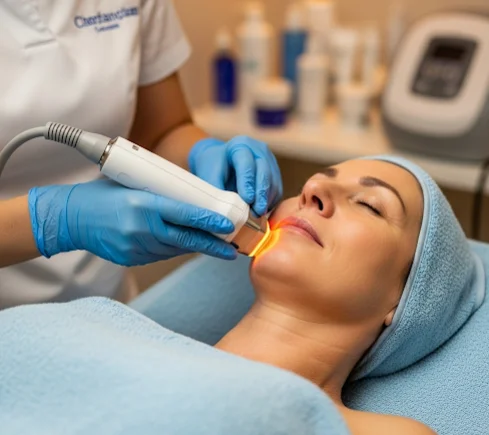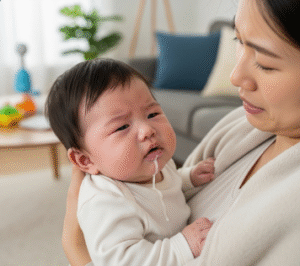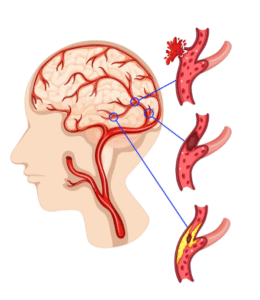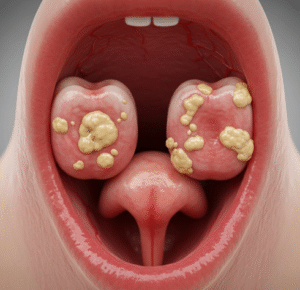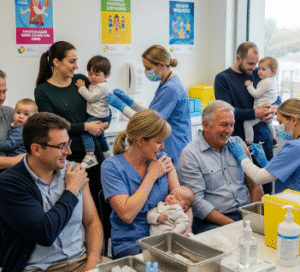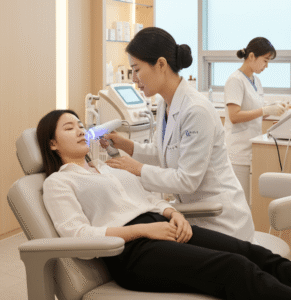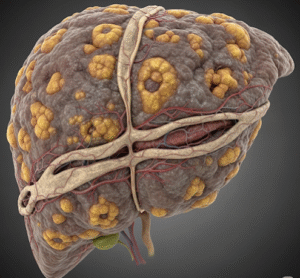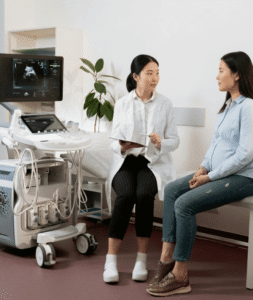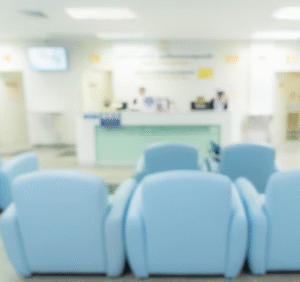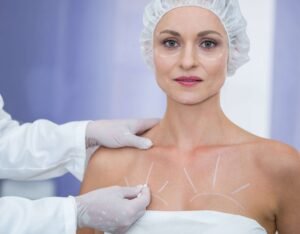What It Is
Skin tightening refers to a range of non-surgical treatments designed to firm, lift, and restore elasticity to the skin by stimulating collagen and elastin production. As we age, collagen breaks down and elastin fibers weaken, leading to sagging, fine lines, and wrinkles. Skin tightening therapies aim to reverse or slow this process using advanced technologies or injectables.
In Korea, skin tightening is one of the most in-demand anti-aging solutions. The country’s clinics utilize cutting-edge devices and techniques such as:
➝ Ultrasound-based therapy (Ultherapy, Shurink HIFU) → Targets deep layers for lifting.
➝ Radiofrequency (Thermage FLX, Scarlet RF, Sylfirm X) → Uses heat to remodel collagen.
➝ Microneedling RF → Combines micro-injuries with RF energy for renewal.
➝ Injectable collagen stimulators (Sculptra, Radiesse, Rejuran) → Support dermal tightening from within.
➝ Laser-based tightening (Fraxel, CO₂ fractional lasers) → Resurface and stimulate new collagen.
Korean dermatology emphasizes natural, gradual results, making skin tightening not just a treatment but a preventative and maintenance program.
Why It’s Done
Skin tightening is performed for both aesthetic and restorative purposes:
➝ Reduce sagging → Firms loose skin on the face, jawline, and neck.
➝ Wrinkle improvement → Smooths fine lines by boosting collagen.
➝ Contour definition → Enhances cheekbones, jawline, and under-eye area.
➝ Texture refinement → Improves pore size and overall skin smoothness.
➝ Preventative anti-aging → Maintains skin firmness before visible sagging occurs.
➝ Post-weight loss skin tightening → Firms areas like cheeks or chin after rapid fat reduction.
In Korean beauty culture, skin firmness (탄력, talryeok) is highly valued. Many patients pursue tightening not just to look younger but to maintain the “baby-face” look (동안, dongan) that is central to K-beauty standards.
Alternatives
If skin tightening is not suitable, alternatives include:
- Surgical facelift or neck lift → Provides dramatic results but is invasive.
- Dermal fillers → Restore volume but do not lift significantly.
- Botox → Reduces wrinkles but doesn’t address sagging.
- Thread lifts → Provide mechanical lift but with shorter longevity.
- Topical skincare (retinoids, peptides) → Preventative but limited tightening effects.
In Korea, alternatives are often combined with skin tightening treatments:
- HIFU + Botox → Tightening plus wrinkle smoothing.
- Thermage + Rejuran Healer → Collagen remodeling plus skin repair.
Preparation
Preparation ensures optimal results and minimizes risks:
➝ Consultation & imaging → Korean clinics use 3D scanning to evaluate sagging, elasticity, and contours.
➝ Medical history review → Patients disclose allergies, medications, and skin conditions.
➝ Skincare adjustment → Discontinue retinoids, acids, and scrubs 5–7 days prior.
➝ No alcohol or smoking → At least 48 hours before treatment.
➝ Avoid blood thinners → Stop aspirin or supplements 5–7 days prior (with medical guidance).
➝ Sun protection → Avoid tanning or sunburn before treatment.
Many Korean clinics also perform a hydrating or calming pre-care facial before starting, ensuring skin is in its best state for energy-based therapies.
How It’s Done
The process depends on the technology or injectable chosen, but typically includes:
- Cleansing & numbing
- Skin is deeply cleansed.
- Numbing cream applied for 20–30 minutes if RF, microneedling, or injectables are used.
- Energy-based delivery
- HIFU devices (Ultherapy/Shurink) deliver ultrasound energy to deep skin layers.
- RF devices (Thermage FLX, Scarlet, Sylfirm X) heat the dermis to stimulate collagen.
- Laser resurfacing (Fraxel, CO₂) creates controlled injury for new tissue growth.
- Injectable tightening
- Collagen stimulators (Sculptra, Radiesse) are injected for gradual dermal remodeling.
- Rejuran Healer (PN) strengthens and repairs skin structure.
- Post-care treatment
- Cooling masks, LED red light, or exosome serums soothe skin and speed recovery.
Treatment schedule:
- HIFU / Thermage → Once or twice a year.
- Microneedling RF → 3–4 sessions, spaced 4 weeks apart.
- Collagen stimulators → 2–3 sessions, spaced 4–6 weeks apart.
Recovery
Skin tightening has minimal downtime, but recovery depends on the method:
- HIFU / Thermage → Mild redness or swelling for 1–2 days.
- Microneedling RF → Pinpoint redness or dryness for 2–5 days.
- Injectables (Sculptra, Radiesse) → Swelling or bruising for 3–7 days.
- Laser resurfacing → Peeling and redness for 5–7 days.
Aftercare tips:
➝ Apply SPF 50+ sunscreen daily.
➝ Use gentle, hydrating skincare.
➝ Avoid hot saunas, alcohol, and intense workouts for 48 hours.
➝ Stay hydrated to support healing.
In Korea, clinics often provide home-care kits with soothing creams, recovery masks, and sunscreen, ensuring patients heal comfortably and maintain results.
Complications
Skin tightening treatments are generally safe, but possible complications include:
➝ Redness or swelling → Common, temporary.
➝ Bruising → More likely with injectables.
➝ Dryness or flaking → After RF or laser resurfacing.
➝ Hyperpigmentation → Rare, but possible if post-care sun protection is ignored.
➝ Infection → Extremely rare, prevented with sterile practices.
Korean dermatology minimizes risks through highly trained doctors, precise device calibration, and customized protocols for each patient.
Treatment Options in Korea
Korea is a global leader in skin tightening technology and innovation, offering a wide range of options:
1. Popular Devices & Treatments
- Shurink HIFU → Korean equivalent of Ultherapy, effective and affordable.
- Thermage FLX → Premium RF tightening, popular among older patients.
- Scarlet RF / Sylfirm X → Microneedling RF for both tightening and skin renewal.
- Fraxel & CO₂ lasers → Dual resurfacing and tightening effect.
- Injectables (Sculptra, Radiesse, Rejuran) → Collagen stimulation and repair.
2. Combination Programs
- HIFU + Thread Lift → Non-invasive tightening plus structural lift.
- RF + Exosome Infusion → Tightening plus regenerative repair.
- Thermage + Botox + Fillers → Full rejuvenation package.
3. Cost & Accessibility
- Shurink HIFU → ~$300–600 per session.
- Thermage FLX → ~$900–1,500 per session.
- Microneedling RF → ~$200–400 per session.
- Injectable stimulators → ~$600–900 per vial.
4. Preventative & Cultural Approach
- Patients in Korea often start tightening treatments in their late 20s to early 30s.
- The focus is on slowing aging naturally, rather than waiting until sagging is advanced.
5. Medical Tourism Advantage
- Korea is a top destination for skin tightening because of:
➝ Advanced technology and expertise
➝ Affordable pricing compared to Western clinics
➝ Natural-looking results with minimal downtime
Final Thoughts
Skin Tightening in Korea combines cutting-edge technology, regenerative injectables, and the preventative philosophy of K-beauty to deliver results that are both effective and natural. From ultrasound and RF devices to collagen-stimulating injectables, Korean clinics offer a wide range of options tailored to individual skin needs.
For patients seeking firmer, smoother, and more youthful skin without surgery, Korea remains one of the world’s best destinations. With its expertise, affordability, and holistic aftercare, skin tightening here ensures long-term beauty and skin health.

